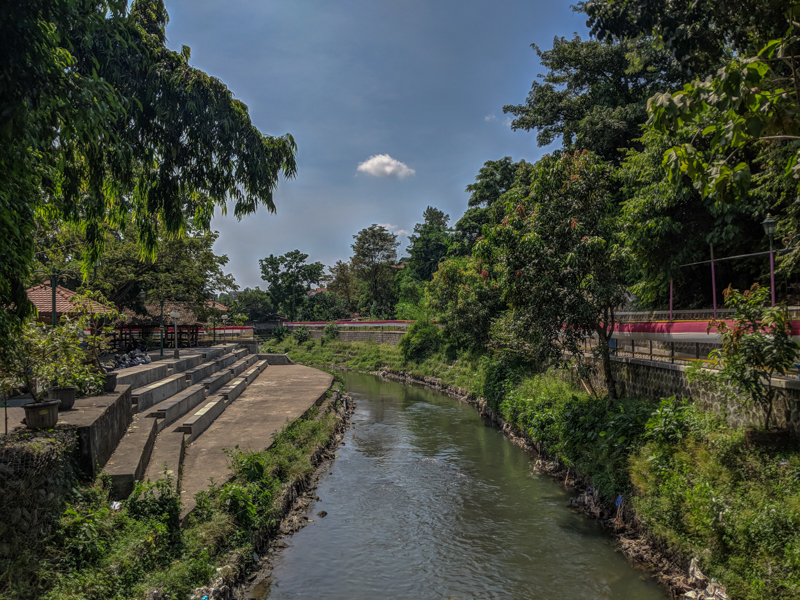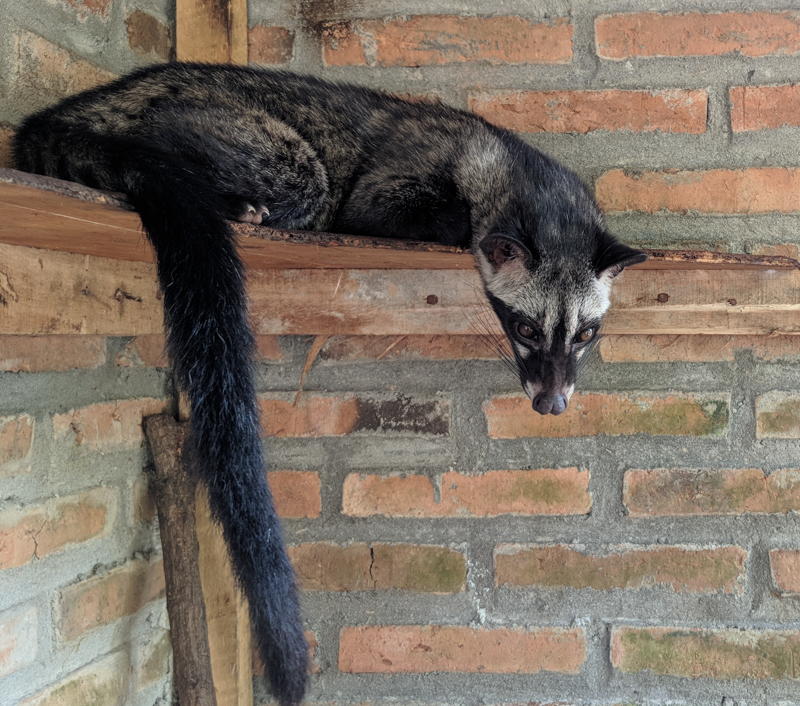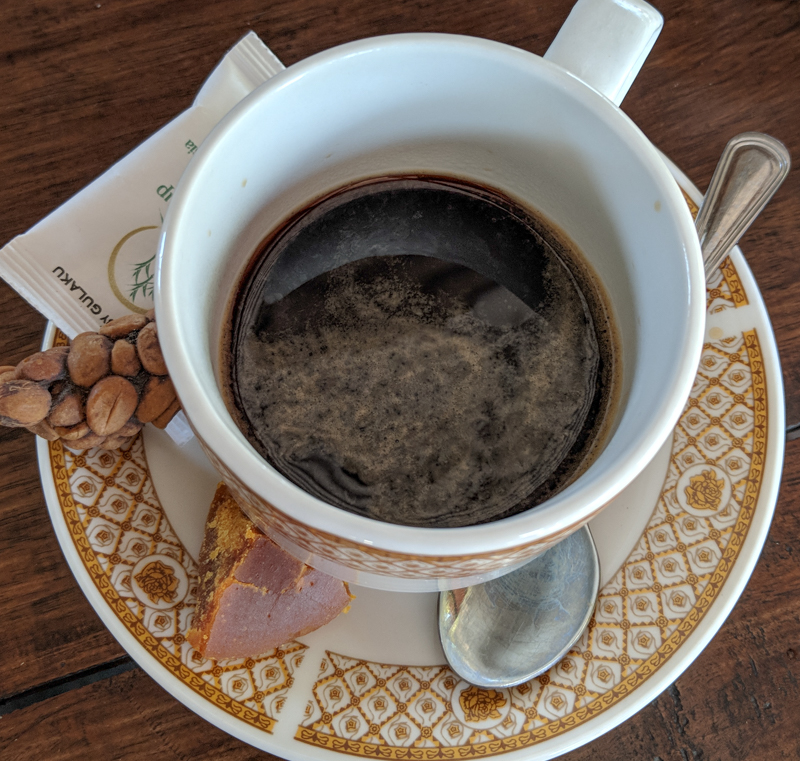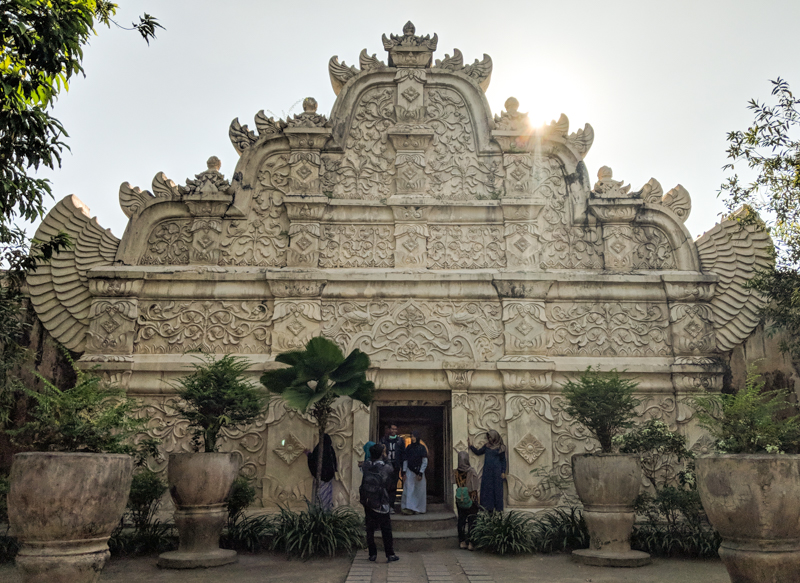Is it a scheme or a scam?—Navigating tourism in Yogyakarta

Something that kept coming up as I planned my trip to Indonesia is the belief that locals will try to get away with charging tourists way more than whatever the goods or services you’re trying to buy are actually worth. I’ve made it a habit of looking up what things should actually cost before heading out, that way if I find myself being pulled into a haggling match (which happens more often than I’d like), I can more confidently stick to my guns.
Arriving in Yogyakarta
When my flight landed in Yogyakarta’s international terminal, I was greeted with a line of taxi drivers on either side of the exit yelling, “Taxi? Taxi?” Ignoring them, I found a quiet corner to could get my bearings and figure out the best way to get to my hostel. (Though one taxi driver did follow me asking, “Taxi?”)
As it turned out, I needed a taxi to get to my hostel. Rather than stay at the international terminal, I went to the domestic terminal to see if I could find a cab driver who wouldn’t overcharge me. The cost to hire a car via Grab was only 30 IDR, so that was the price I was aiming for.
“100 rupiah,” the first taxi driver I approached said.
“Too much!” I replied. “15!”
“80.”
“I can get a Grab for 30!” I showed him my phone. He made an indignant sound, threw his hands up in the air, and walked away.
Much like JFK, the Yogyakarta airport banned rideshares from picking up at the airport. I tried to be sneaky and ordered a Grab from an adjacent restaurant.
“It’s still in the no-pickup zone,” the Grab driver replied. “Meet me at Platinum Hotel.”
I looked up the hotel location on Maps.me (this app has been saving my ass in areas where my data is slooooow, which is everywhere). It was across a major road, ten minutes away.
Here’s a fun fact: There are no pedestrian signals in Yogyakarta. Luckily, after three weeks in the Philippines, I’ve mastered the art of darting through a swarm of moving cars, buses, and scooters. After playing a game of chicken, I leveled up and made it to the Platinum Hotel without injury.
Hendo, my Grab driver pulled up. I thanked him for waiting (the total walk ended up being closer to 20 minutes with traffic). He was chattier than other drivers I’ve had in the past, and I learned that he was originally from Sumatra but moved to Java ten years ago for school.
“What did you study?” I asked.
“Computer science,” he said. “But there are no computer science jobs in Java!” (It took me two days to get this joke.)
My hostel was about 30 minutes away from the airport, but Hendo and I made good conversation, setting the bar high for the beginning of the trip. He left me with several recommendations for places to go and his contact information in case I needed a ride getting there.
Exploring Yogyakarta

The main tourist attractions were about 6km away from my hostel and accessible by bus, but I decided to walk instead. Indonesia really reminds me of the Philippines, except it’s more Muslim and with slightly better drivers (sorry!).
Kraton Palace
As I approached the area around Kraton Palace, motorbikers and tricycle drivers on the road started approaching me asking me if I needed a ride. I declined, up until I reached an underpass where there was literally no room for me to walk on the road. I hitched a ride with a tricycle the rest of the way to Kraton Palace.



Kraton Palace, or the Palace of Yogyakarta, is the official residence of the reigning Sultan of Yogyakarta. For 35000 IDR, you’re free to walk the grounds, and there are a few areas detailing the military history of Java and artifacts from past rulers. All the information within Kraton is written in Indonesian, and the entrance fee does not come with a tour guide, so those wanting more context should consider hiring a guide (there are swarms of them hanging out throughout the compound).


By the time I thought of hiring a guide, I had already explored the entire compound and was ready to head over to the Water Castle, another historical area where past sultans used to keep their concubines. I exited Kraton with a group of school children. I must have stuck out like a sore thumb because within two seconds of exiting, a tricycle driver was following me, offering a ride. It was hot, so I said yes.
“And perhaps we can stop for coffee on the way,” he said. “And are you interesting in learning about Wayang Kulit? I have a friend who is an artist that makes the puppets.”
Okay, so I’ve read about these schemes online. A driver offers to take you to your destination for dirt cheap, and on the way he stops at different places where his friends try to sell you items for a premium (and most of the time, they’re fakes), and the driver earns a commission on whatever purchases the tourist makes. I knew exactly what I was getting into, but let’s be honest. I enjoy a good story, I love meeting people, and after wandering around the Kraton not being able to understand anything, I welcomed the chance to ask people questions, even if they only wanted my money.
“Sure!” I said. “I love coffee!”
Wayang Kulit
The first place we stopped at was at a back alley puppet shop. After the usual, “Where are you from? What, you look like us! Oh, you’re ancestors are from the Philippines? We’re neighbors!” the tour guide explained to me the history and process of Wayang Kulit, the art of shadowpuppetry in Java.

The puppets are made from water buffalo skin, sourced from the Sulawesi island of Indonesia (very close to Mindanao, Philippines. Yes, we are neighbors!). This shop used recycled motorcycle parts to carve and punch holes through the raw buffalo hide.


After the puppet’s pattern is created, they paint both sides of the puppet and mount them on bamboo sticks. The finished products are used for performances in the evening or to sell to enthusiastic tourists as souvenirs.


The original asking price started at 600000 IDR, but I managed to snag one for 200000 IDR. In the grand scheme of things, that’s like $15 USD and for the tour and conversation, I think it was well worth it.
Kopi Luwak

The next place my driver took me to was a kopi luwak cafe, complete with its very own civet cat. Yan, the shop owner, walked me through the kopi luwak process, and then offered me a cup to drink.




While I was drinking coffee, we launched into a conversation about religion. Apparently Indonesians are required to declare a religion on their identification cards, though Indonesia current recognizes six religions (and are trying to add a seventh, Judaism). It’s illegal to be Atheist or Agnostic. Yan identified as Hindu, and he used to be a tour guide for Borobudur, so he had a wealth of knowledge to share about Buddhism as well.
Somehow our conversation led to politics, capitalism, Donald Trump, and big houses. The larger house you have, the more you have to worry about maintaining. Whereas if you have a smaller house, you have more time to enjoy other things in life because you’re not stuck trying to fix all of the problems inside your house. (This only affirms my decision to forgo homeownership even more.)
The Underground Mosque and Water Castle
After saying goodbye to Yan, the tricycle driver finally took me to the Water Castle…only to find that it was closed??? But there was a woman sitting near the entrance who was totally willing to take me around a secret entrance and through the Underground Mosque!




(Side note: It’s a common scheme to bring tourists to fake “closed” entrances where “guides” happened to be stationed, but the Water Castle was actually closed by that point. Apparently, I talk too much.)
The Water Castle (Taman Sari) was the Sultans’ royal gardens between 1785-1812. Much of the grounds were destroyed after the British invasion of 1812 and fell out of use after an earthquake in 1867 that drained most of the water from the area. Since then, only the water bathing complex was restored. Now, residents of Kampung Taman have settled around the area, living and working in batik shops hidden around the alleyways.
The woman took me through the underground tunnels (which used to be filled with water), up a hill, and through the neighborhood before finding a spot above the bathing complex to peer into.

After the tour the woman bid me farewell, and I found myself really thinking about the difference between schemes and scams. It makes perfect sense that tourists are charged more than locals—even when being overcharged, I’m still paying way less than I would be back at home! And even though I didn’t need to buy a leather puppet or coffee beans, the cost of purchasing those goods was more than worth the experience of meeting new people and learning a bit more about the history and their own lives. Plus, you gotta support local businesses, right?
If I said no to every person who approached me on the street, what would end up happening is I’d just continue wandering from place to place with zero context of what I was looking at, and I wouldn’t be any wiser for it. Sure, I’d probably be able to get better pictures (I’m garbage at taking pics when I’m talking to people), but honestly, conversations are worth much more to me than #instagrammoments.
About Yogyakarta, Java, Indonesia
Trip Duration: 2 days/2 nights 4 days/5 nights
Accommodations: BHUMI Hostel in Kotagede
Goals: See some sites and the Bordobuhur Temple
History: Yogyakarta, also called Jogja, is an educational and artistic hub of Indonesia. It was part of the Mataram Kingdom in the 8th century and until 1812 remained free from Western occupation. The British invaded in 1812 and Yogyakarta became part of the Dutch East Indies until Japanese occupation in 1942. After the Japanese defeat in WWII, the Republic of Indonesia declared its independence, leading to a four year standoff against the Dutch. When the Dutch invaded Jakarta in 1946, Yogyakarta became Indonesia’s temporary capitol. Then the Dutch invaded Yogyakarta in 1948. Sultan Hamengkubuwono IX locked himself in his palace and refused to cooperate with the Dutch, instead allowing Indonesian rebels to use the palace as their headquarters. Because of the Sultan’s godlike status, the Dutch decided to retreat in fear of angering the Javanese if they were to act against the Sultan.
Due to the Sultan’s support for Indonesia’s independence, Yogyakarta gained special status in 1950, and it is the only region in Indonesia still ruled by a monarchy.